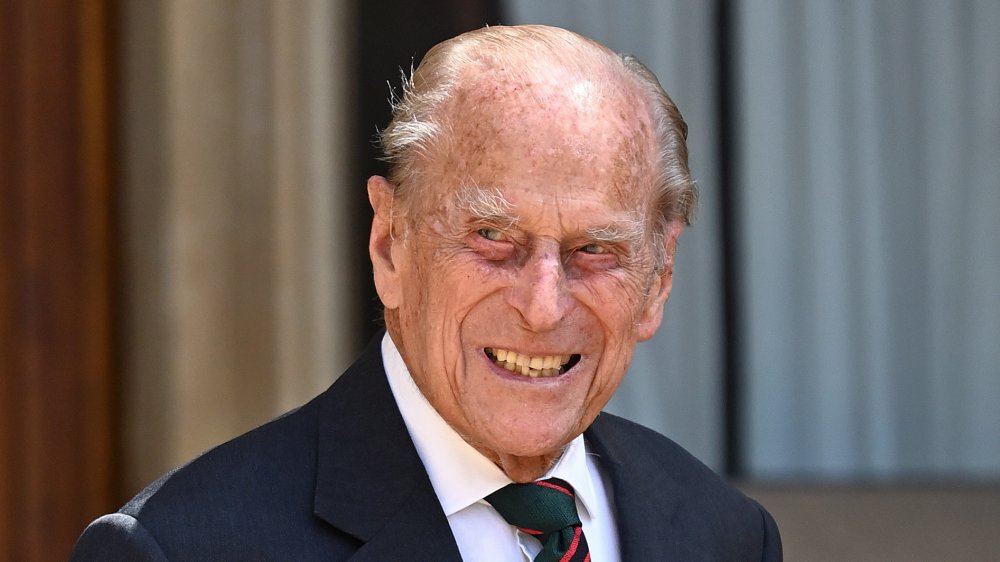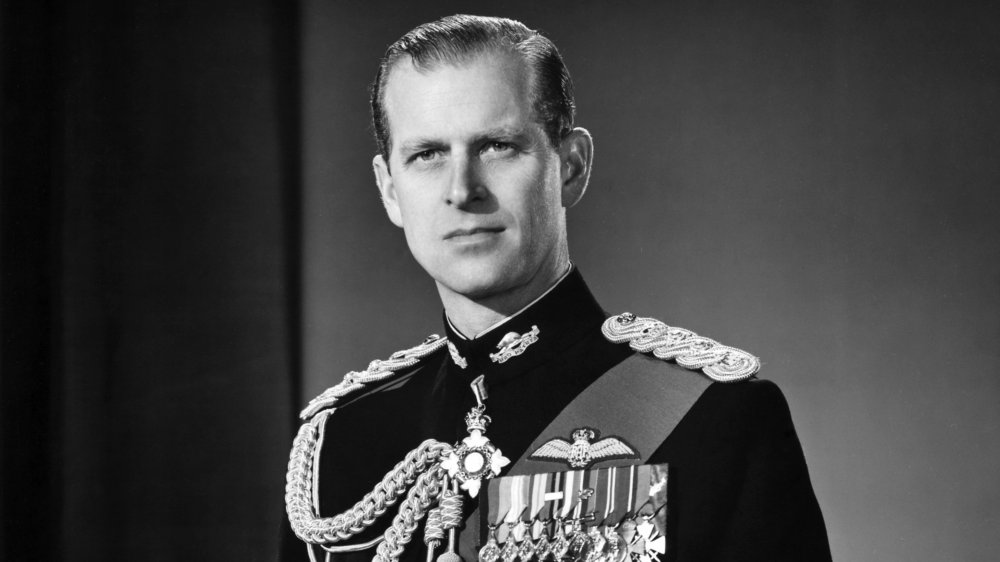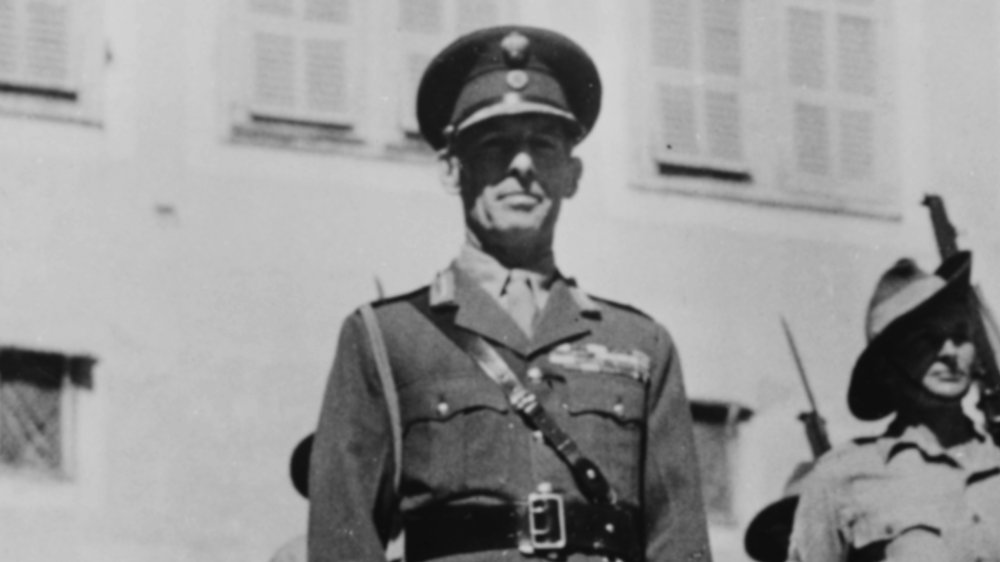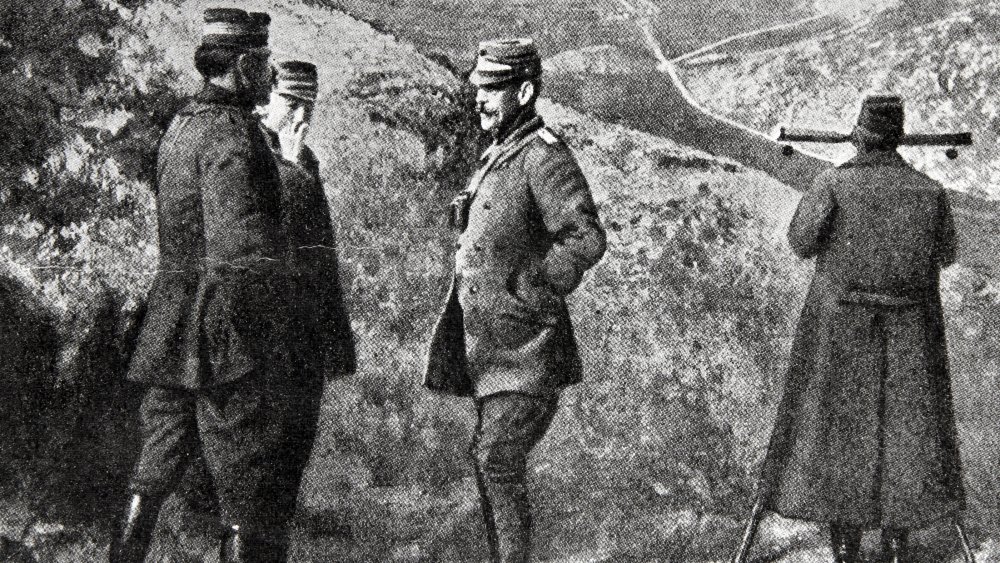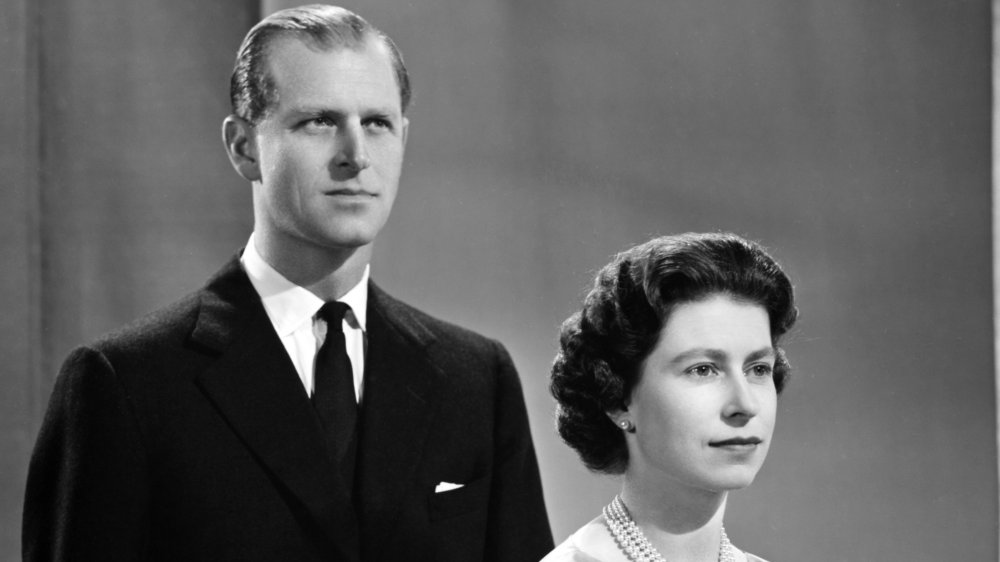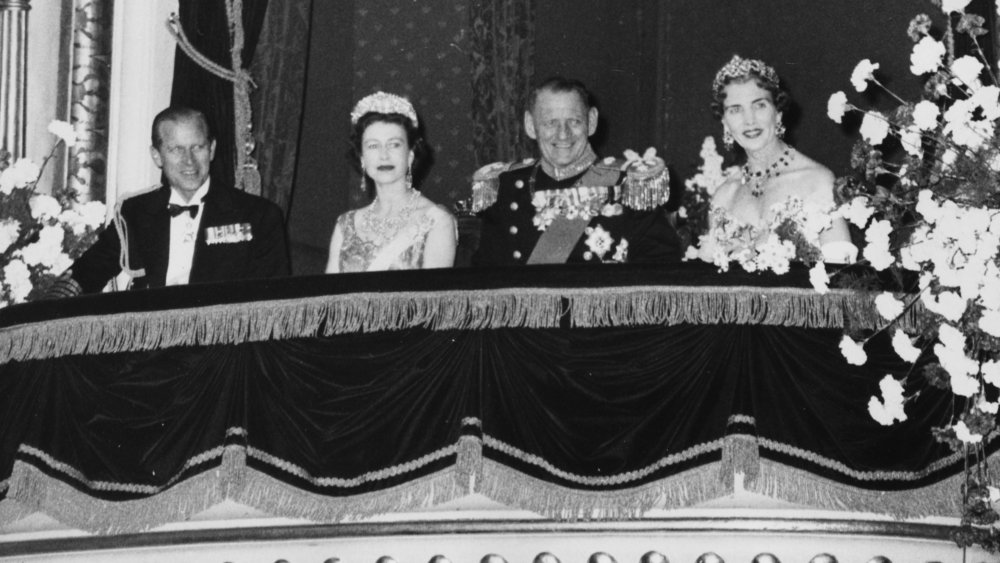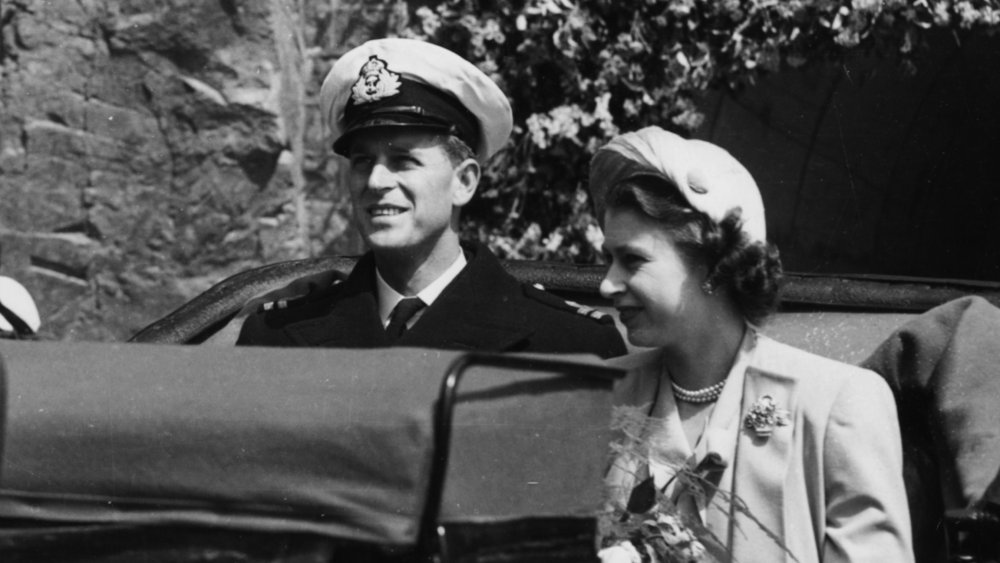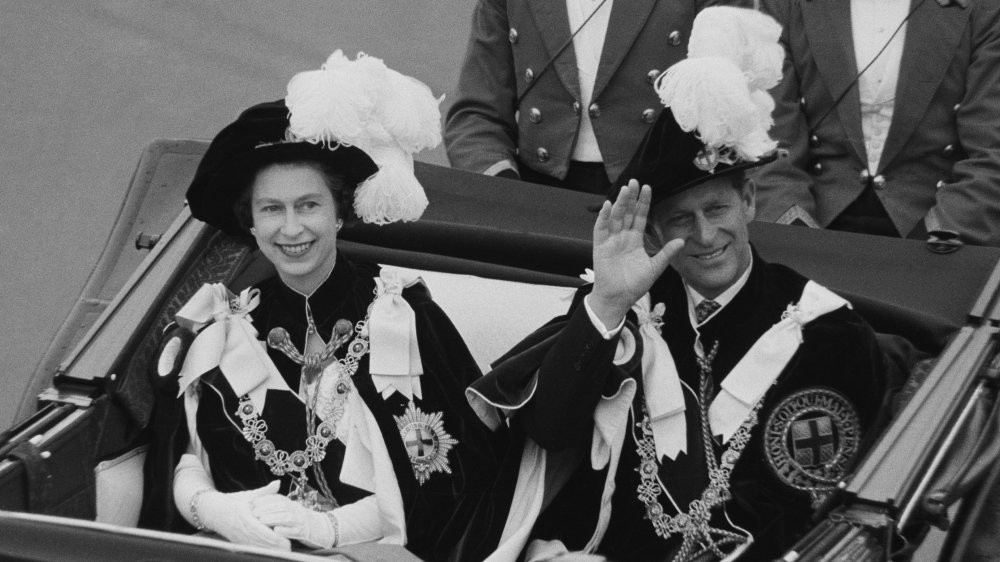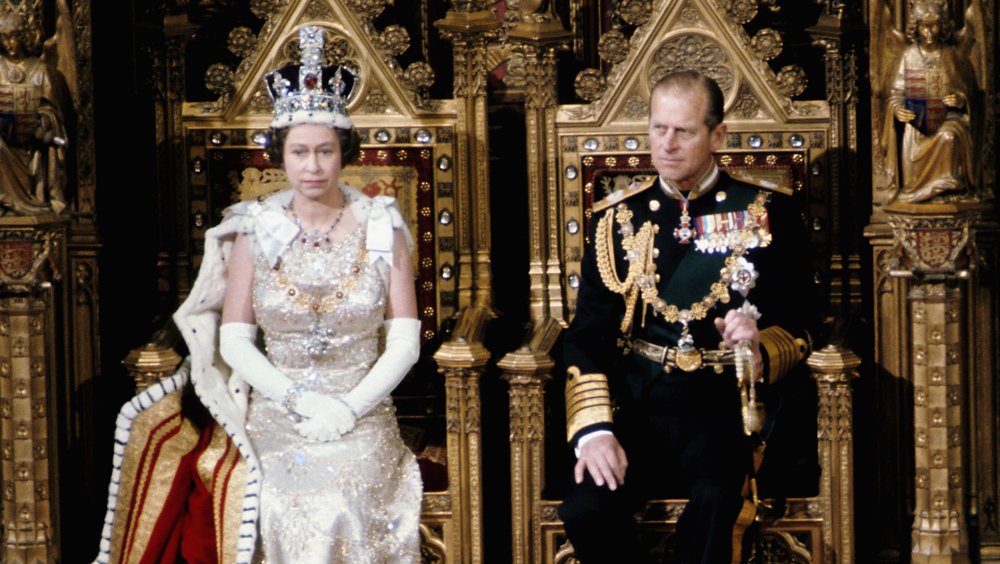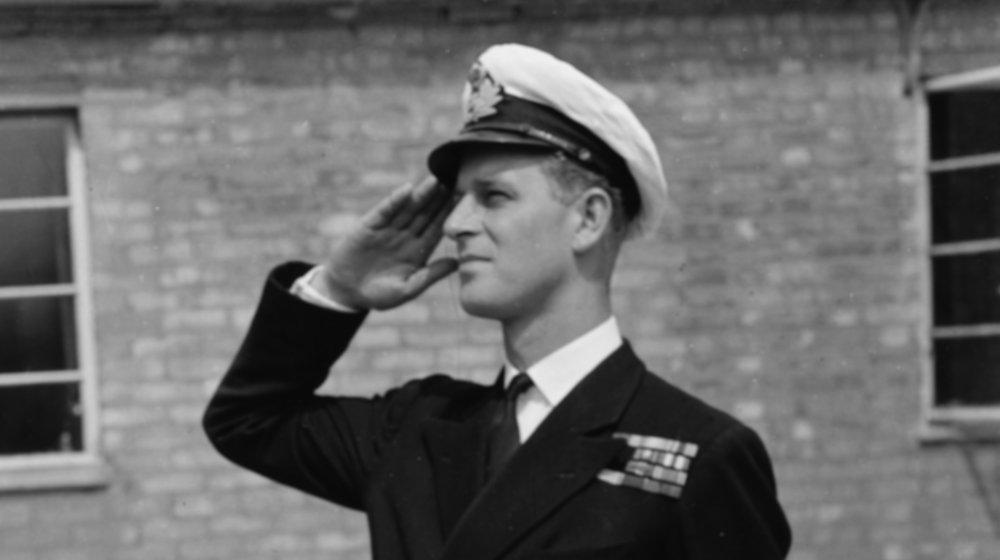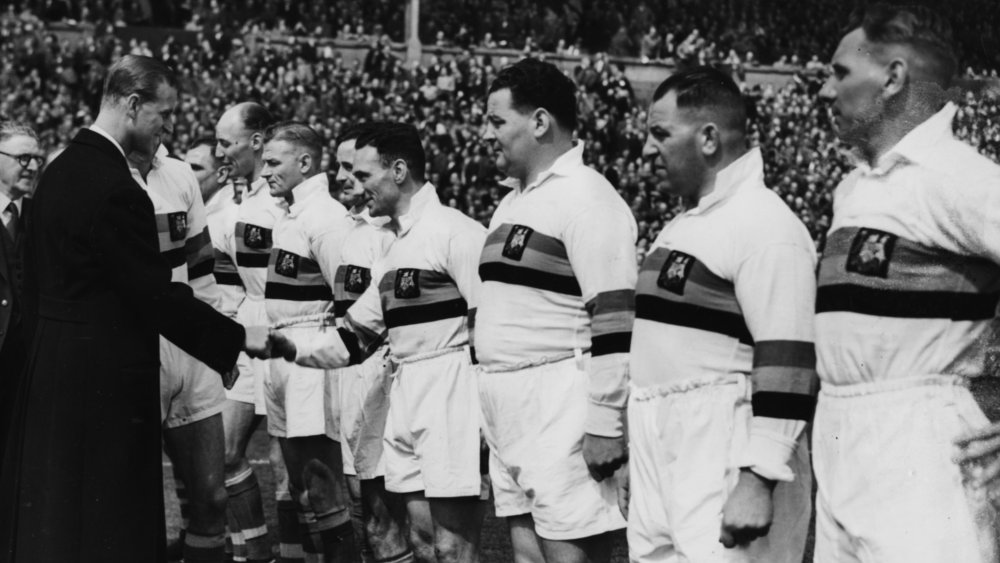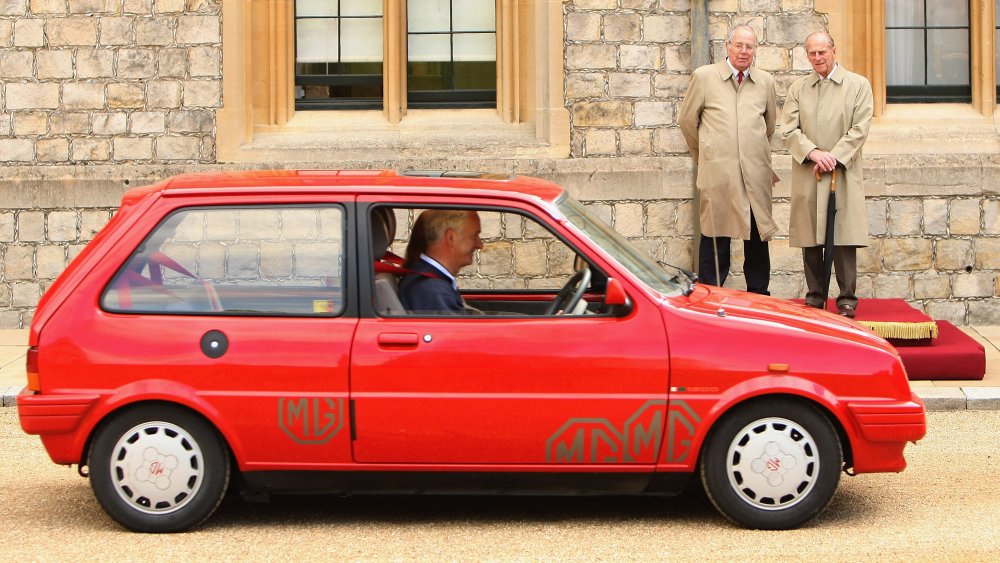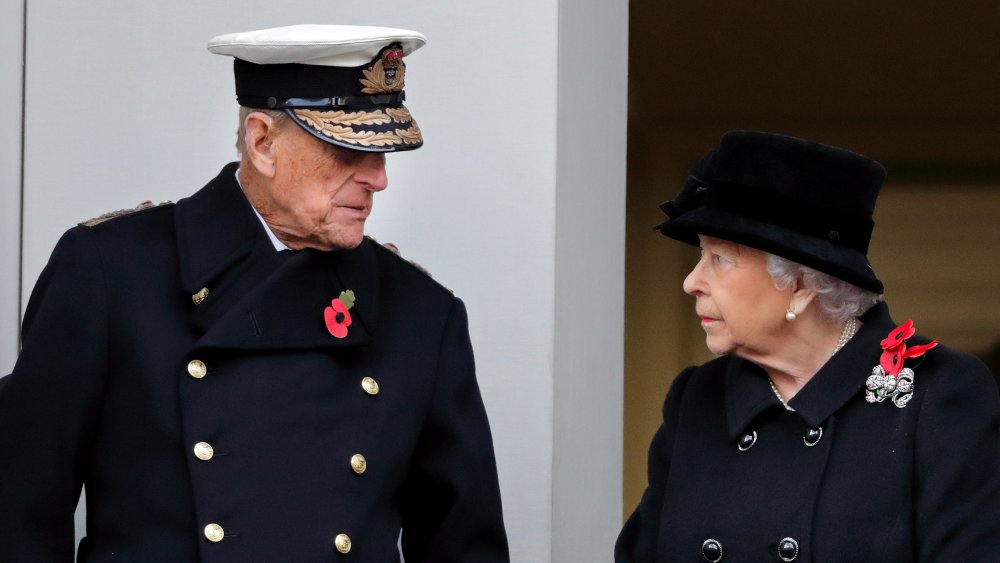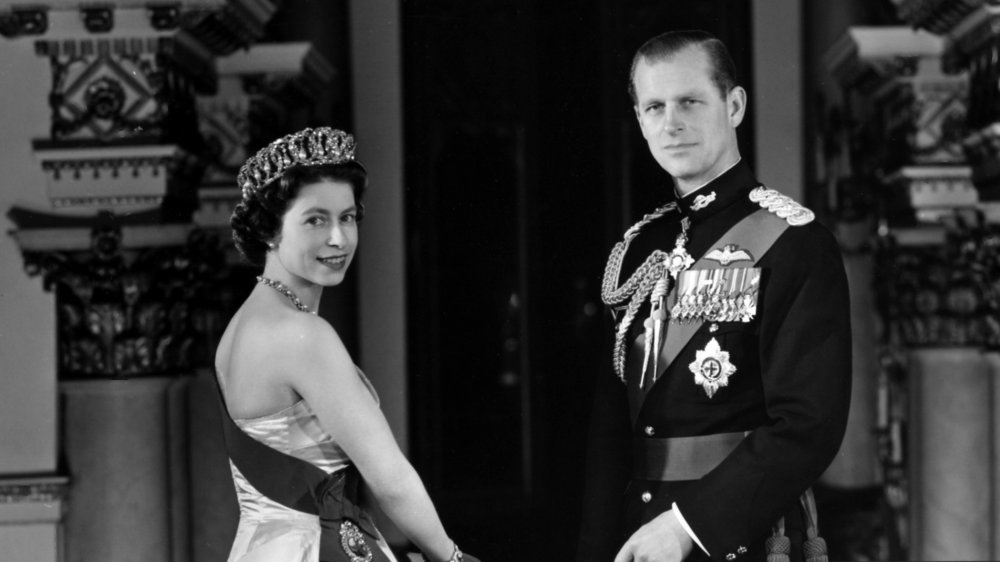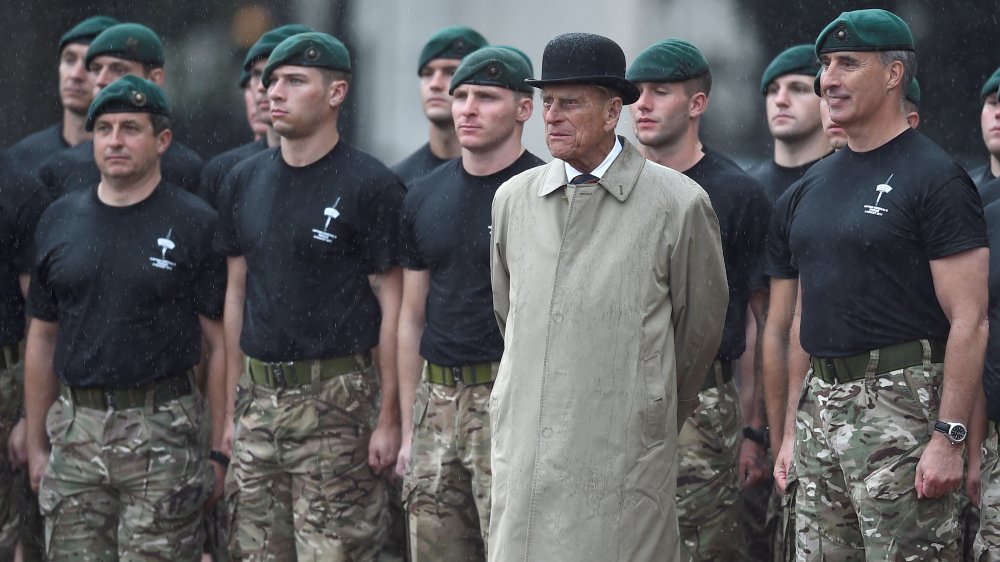The Truth About Prince Philip's Life Before He Met Queen Elizabeth
What's the truth about Prince Philip's life before he met Queen Elizabeth? For being the longest-serving consort to a British monarch in history, Prince Philip keeps it pretty low-key. While the world talks about Prince Harry and Megan Markle, and Kate Middleton and Prince William – and even a little about Prince Charles – the guy who's been sharing the royal bedroom with Queen Elizabeth II since 1947 still remains a bit of a mystery. And though Netflix's The Crown has shed some light on his role at Buckingham Palace, though the show is by no means a documentary, few people know much about who he was before he was Queen Elizabeth's husband.
For example, the Duke of Edinburgh wasn't Prince Philip's first royal title, as he was a Greek and Danish prince long before he was an English royal. And though he abdicated those titles for true love, his past is far more distinguished than most people realize. From his painful childhood in a broken home to his distinguished service in the Royal Navy, here's the truth about Prince Philip's life before he met Queen Elizabeth.
Long before he met Queen Elizabeth, Prince Philip was born on a kitchen table in Corfu, Greece
Prince Philip was originally known as Prince Philip of Greece, not because he did a stunning rendition of "Summer Nights" but because he was, in fact, born in Greece. Before he met Queen Elizabeth, Prince Philip was born on a kitchen table at Mon Repos, a summer residence for the British High Commissioner of the Ionian Islands on the island of Corfu. His family was Greek and Danish nobility; his grandfather was a Danish prince brought to Greece to become the king (via The Sun).
Prince Philip's parents were Prince Andrew of Greece and Denmark and Princess Alice of Battenberg, and according to Town & Country, Prince Philip stood sixth in line to the Greek throne. His father was next in line after his brother, King Constantine. Prince Philip also had four sisters, with whom he shared his early life in Greece.
But perhaps most interestingly, and incestuously, he is a great-grandchild of Queen Victoria, as is Queen Elizabeth II. That makes them third cousins.
Prince Philip's grandfather was the longest-sitting king of Greece
Before he met Queen Elizabeth, Prince Philip was the child of the sibling of a reigning monarch (via Express). His uncle was King Constantine I, who took control after Prince Philip's grandfather, King George I, was assassinated in 1913. How King George ascended the throne is a rather interesting story, as King George himself was a Danish noble and didn't have much connection to the country at all. But in those days, monarchs were sometimes elected by a country's general assembly, and Greece elected King George when he was only 17.
King George reigned for 50 years, until his assassination just before World War I, when an anarchist named Alexandros Shinas shot him in the back. The royal had been on a morning walk without bodyguards in the city of Salonika, and his assassination led to Prince Philip's uncle King Constantine taking the throne.
Ironically, according to a story in Mental Floss, King George had been planning to retire and abdicate his throne to his son after sitting for nearly 50 years.
Prince Philip's family was forced to leave Greece at an early age
The Greek monarchy didn't last long after King George's assassination, as the Greco-Turkish war led to upheaval in the country — and the eventual removal of King Constantine, who was forced to abdicate the throne in 1922. Prince Philip's father, Prince Andrew, was working with the military at the time, and was subsequently convicted of treason, sentenced to death, and exiled from the country.
According to The Sun, the family was rescued from Greece by a British warship, and settled in Paris for the better part of a decade. However, the move was stressful on Prince Philip's parents, and the family suffered as a result. "Though his parents both adored him, Philip saw little of them in his nomadic early years," Philip Eade wrote in his book Young Prince Philip. "His mother's nerves had been badly strained by the family's exile from Greece, and because of this the children were regularly packed off to friends and relations." Clearly, Prince Philip had suffered before he met Queen Elizabeth.
Prince Philip's mother was treated by Sigmund Freud
Before Prince Philip met Queen Elizabeth, his mother didn't adjust well to the family's life in Paris. According to the Independent, Princess Alice initially passed her time helping other Greek refugees before converting to the Greek Orthodox religion in 1928. Princess Alice dove headfirst into religion, going so far as to tell people she was receiving messages from God and acting as a divine intermediary. This eventually led to her nervous breakdown in 1930, when she was committed to Dr. Ludwig Binswanger's sanatorium in Kreuzlingen, Switzerland (via Express).
Princess Alice was diagnosed with paranoid schizophrenia, and was treated by none other than Sigmund Freud. As Freud was apt to do, he blamed her state on sexual frustration, and prescribed ovarian x-rays to numb her libido. She ultimately managed to escape the institution after nearly two years, and cut off contact with her family as she roamed around Europe for the next few decades. According to that same Independent story, Princess Alice hid a Jewish family in her home when the Nazis invaded Greece, and ultimately returned to the UK in 1947 for Prince Philip's wedding.
Before he met Queen Elizabeth, Prince Philip's nickname really was Bubbikins
Princess Alice may have slipped into obscurity (unless you've seen the 2012 documentary The Queen's Mother-in-Law) were it not for an episode of The Crown that delved into her somewhat-estranged relationship with Prince Philip. The episode, called "Bubbikins," is named after the nickname Prince Alice gave to her only son. Though the origin of the nickname is unclear, according to Express, Princess Alice sent a letter to Prince Philip in 1965 addressing him as such.
Though the nickname is indeed a thing, according to O, The Oprah Magazine, the "interview" Princess Alice gave to a fictional reporter from The Guardian in The Crown never happened. Still, Prince Philip and his mother did eventually reconcile their relationship, and she came to live with the royal family at Buckingham Palace at the end of her life.
Prince Alice died in 1969, after leaving Prince Philip a note reading, "Dearest Philip, be brave, and remember I will never leave you, and you will always find me when you need me most. All my devoted love, your old Mama" (via Express).
Prince Philip spent much of his childhood in France
After his family was exiled from Greece at barely a year old, Prince Philip and his family moved to Paris, where they lived in the suburb of St. Cloud. His father, Prince Andrew, didn't last long in Paris, leaving the family shortly afterwards and settling in the South of France, according to Biography. Prince Andrew later relocated to Monte Carlo, where he spent much of the rest of his life drinking and gambling before he died in 1944 in the Metropole Hotel.
Prince Philip lived in France for the next seven years, according to The Sun, where he learned to speak French from a very early age, long before he met Queen Elizabeth. His knowledge of the language didn't diminish much as he got older, either, as during an official state visit in 2008, France's then-First Lady Carla Bruni-Sarkozi said he spoke "impeccable French," according to the Daily Mail.
Prince Philip was raised by his aunts and uncles, who were British royals
After Prince Philip's mother, Princess Alice, had her nervous breakdown and was involuntarily committed, the young prince didn't hear from her for five years. "It's simply what happened," he revealed, according to Town & Country. "The family broke up. My mother was ill, my sisters were married, my father was in the south of France." He added that he simply had to get on with it.
With a father living it up elsewhere and a mother in a Swiss mental institution, the responsibility for raising Prince Philip fell on his aunts and uncles before he met Queen Elizabeth. Fortunately, those aunts and uncles happened to be British Royalty, and the Milford Havens and the Mountbattens took him in. Prince Philip would later adopt the surname of Mountbatten. Additionally, it was his uncle, Louis "Dickie" Mountbatten, who cajoled Philip into accompanying a young Princess Elizabeth and her sister Princess Margaret — who has a tragic, real-life story of her own — during their visit to the Royal Naval College, according to Biography. The rest is British royal history.
Prince Philip was educated at four different schools
Before he met Queen Elizabeth, Prince Philip was educated at four different schools. The first that he attended was the MacJannet American School in France while his mother, Princess Alice, was still living with him. Though little is documented about his time there, a picture in Town & Country shows him practicing archery with classmates.
However, after his parents left, and his aunts and uncles were responsible for his education, Prince Philip was sent to the Cheam School in the UK, then to a school in Germany owned by one of his sister's husbands.
After returning to the UK, Prince Philip was sent to a boarding school called Gordonstoun in Scotland. This was the last stop on his educational tour, where, according to The Sun, he was captain of both the cricket and hockey teams. Not only was he adept on the field, Prince Philip was an academic and social star as well, earning Head Boy honors during his last term at Gordonstoun.
Before he met Queen Elizabeth, Prince Philip's sister was killed in a plane crash
Before Prince Philip met Queen Elizabeth, and while he was matriculating at Gordonstoun, tragedy struck his family. On Nov. 16, 1937, Philip's sister, Princess Cecile of Greece and Denmark, was flying from Frankfurt, Germany to London for her brother-in-law's wedding. According to an account in Closer Weekly, the flight was scheduled to land in Brussels, Belgium en route to London, when foggy weather supposedly caused an emergency landing in Ostend, Belgium. The thick fog in that city caused the plane to hit a factory chimney, and the plane crashed killing all 11 people onboard. That number goes up to 12 if you count the child Cecile was eight months pregnant with.
A later investigation of the accident found the plane may have been making an emergency landing because Cecile had gone into labor early, according to a news story in The Evening Independent. For his part, the stoic Prince Philip didn't let his sadness on the accident show much at school. Town & Country quoted a former classmate telling The Independent, "I suppose he just buried his feelings."
Before he met Queen Elizabeth, Prince Philip's sisters all married Germans
Prince Philip's sister Princess Cecile was married to Georg Donatus, a German Duke who also died in the plane crash. According to Closer Weekly, both were members of the Nazi party, too. Princess Cecile was not the only sister to marry a royal German, either; because Philip's sisters remained in Germany after their parents split, ultimately they all ended up marrying German nobility.
Princess Sophie married Prince Christoph of Hesse in 1930 when she was just 16. His oldest sister, Princess Margarita, married Prince Gottfried of Hohenlohe-Langenburg in 1931. That same year, Princess Theodora married her second cousin Berthold, Margrave of Baden.
This meant Prince Philip's remaining sisters all had ties to Germany before he met Queen Elizabeth. To that end, none were invited to his wedding to Queen Elizabeth in 1947, as wounds from World War II still healing in Europe. What's more, the Independent reports that photos exist of a 16-year-old Prince Philip surrounded by men doing Nazi salutes at Princess Cecile's funeral.
Before he met Queen Elizabeth, Prince Philip was into fast cars
Like many young men, Prince Philip was into fast cars before he met Queen Elizabeth, and driving them faster than he probably should. In fact, before their wedding, Princess Elizabeth wrote in a letter, "'Philip enjoys driving and does it fast! He has his own tiny M.G which he is very proud of — he has taken me about in it, once up to London, which was great fun, only it was like sitting on the road, and the wheels are almost as high as one's head" (via Daily Mail).
Prince Philip's appreciation for fast times continued after he married as well, as the Daily Mail chronicled his many public appearances in race cars, tanks, and muscle cars throughout this life. The Times quoted royal biographer Robert Lacey as saying, "For those very privileged people, who have chauffeurs and footmen coming out of their ears, the ability to drive themselves takes on enormous significance. It is a form of freedom, of being in control of things." Perhaps that's why, at the age of 98, Prince Philip was driving his own Range Rover when he crashed in 2019.
Before he met Queen Elizabeth, Prince Philip was a naval cadet at the Royal Naval College
Before he met Queen Elizabeth, Prince Philip attended the Dartmouth Britannia Royal Naval College, which among other things was the alma mater of King George VI. One weekend when Prince Philip was 18, the young cadet was asked to escort the king's daughters Princess Margaret and Princess Elizabeth during the royal family's official visit. The academy was in the midst of a dual outbreak of mumps and chickenpox, and Prince Philip was one of the few healthy cadets trusted to show the princesses around.
According to an account in Vogue, Philip impressed the girls during a tennis exhibition, bounding with great athleticism over the nets between games. "How high he can jump!" Elizabeth reportedly said. And how does one seal the deal with a future monarch after that kind of physical display? By gorging himself on shrimp, obviously. While spending time on the king's yacht Victoria & Albert, Prince Philip reportedly polished off multiple helpings of shrimp, then topped it off with a banana split. The future queen was pretty much sold on the spot.
Queen Elizabeth II fell in love with Prince Philip when she was only 13
Princess Elizabeth wrote the letter gushing over Prince Philip's fast driving just before her wedding in 1947. But she first met the dashing prince when she was only 13, aka the perfect age for a girl to be impressed by a guy who drives with no regards for the rules. But Princess Elizabeth's crush on her third cousin ran deep. "Never from that moment [did she] think of anyone else," Lady Pamela Hicks, a Mountbatten relation of Prince Philip's, recounted in her memoir Daughter of Empire: Life as a Mountbatten (via Vanity Fair).
Though the princess was smitten, Prince Philip was not quite so quick to commit; though he maintained contact with Princess Elizabeth through World War II and his time in the Royal Navy, it would be 1947 before they were engaged. They've been married ever since, the longest-lasting marriage in the history of the British monarchy.
Before he married Queen Elizabeth, Prince Philip had a distinguished naval career during World War II
Between when he met the future Queen Elizabeth and finally put a ring on it, Prince Philip had some serious world-saving to do in World War II. After finishing at the Royal Naval College, Philip was stationed on the HMS Ramillies in 1940 in the Indian Ocean. From there, he moved to the HMS Valiant, where according to Forces, he was mentioned in dispatches during the Battle of Cape Matapan after spotting enemy forces with his searchlights. He was later awarded the Greek War Cross of Valor for his actions.
Later in the war, while serving on the HMS Wallace, Prince Philip outsmarted enemy forces when he set a raft on fire to divert an enemy attack, according to The Sun. Believing the flaming raft was a distressed British vessel, aircraft bombed the raft and left the Wallace and its 163 crew unharmed. The following year in 1944, Prince Philip was appointed as a First Lieutenant, and served on the HMS Whelp in the Pacific.
